
Asian Online Recipes (Food Glossary)

|
|
|
|
|
|
A B C D E F G H I J K L M N O P Q R S T U V W X Y Z
| Cambodian mint | See Vietnamese Mint |
 |
| Candle Nuts | A hard oily cream-colored nuts used to flavor and thicken Indonesian and Malaysian curries. The shape is similar to macadamia nuts but have drier texture. The name arises because the nuts, when threaded on the mid-rib of a palm leaf, are used as a primitive candle. When roasted and ground, they are used not only to thicken but also to enrich curries and sauces. They should be stored in the freezer to prevent them becoming rancid. Candlenuts should not be eaten raw as the oil is thought to be toxic. They are quite safe once cooked. |
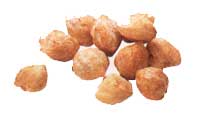 |
| Capers | Capers are the pickled, unopened flower buds of the caper plant. Caper plants are small shrubs about 3 feet tall and native to the Mediterranean area. Buds are picked by hand ever day and the smaller the bud, the higher the quality. | |
| Capsicum | A much milder though still flavorful variety of chili with a long pod large enough to stuff with spiced meat or fish mixtures. | |
| Carambola | Also known as Averrhoa carambola. The local name is Star Fruit. There are several varieties that are very sweet when they are ripe, and can be eaten right off the tree. |
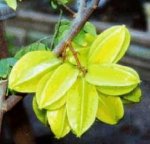 |
| Caraway Seed | Caraway Seed is actually the fruit of a biennial herb in the parsley family, known as Carum carvi. The seed is about 1/5inch long and tapered at the ends. The hard seed shells have five pale ridges. | |
| Cardamom | Next to saffron, the world's most expensive spice. Cardamoms grow mainly in India and Ceylon, and are the seed pods of a member of the ginger family. The dried seed pods are either pale green or brown, according to variety. Sometimes they are bleached white. They are added, either whole or bruised, to pilaus and other rice dishes, spiced curries and other preparations or sweets. When using whole pods, lightly bruise them before adding to the dish. |
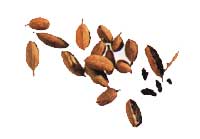 |
| Cashew Nut | A sweet, kidney-shaped nut. In countries where the cashew tree is not grown, it is not possible to get the milky sweet fresh cashews. However, it is possible to buy raw cashews from nut shops, health food stores and grocers specializing in Asian ingredients. | |
| Cassia | Cassia is closely related to cinnamon and is often confused with it. Cassia has a strong, sweet taste and aroma more like cinnamon that cinnamon to American palates. It hails from Burma instead of cinnamon's birthplace of Sri Lanka. A long used spice and has been used in China for as long ago as 2500 B.C. | |
| Cayenne Pepper | Cayenne Pepper is made from the dried pods of pungent chili peppers. This fiery spice adds flair to dishes from Asia, the Americas, and the Middle East. | |
| Celery Seed | Celery Seed is the dried fruit of Apium graviolens, a biennial in the parsley family. This is the same genus and species used for growing table celery, although there are particular varieties that are used for the vegetable. The seeds are very small (about 1/16th of an inch), ovoid and light brown. | |
| Cellophane Noodles | See Vermicelli, Dried Mung Bean |
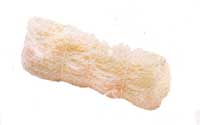 |
| Cha Siew | See Barbecued Chinese Pork |
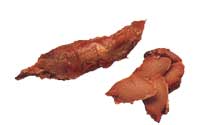 |
| Chervil | Chervil is a lightgreen, lacey, fernlike leaf of Annthriscus cerefolium, a lowgrowing member of the parsley family. | |
| Chili Flakes | They are dried red chilies that have been crushed, usually with the seeds (leaving in the seeds increases the hotness). Store in a cool, dark place in an airtight container. |
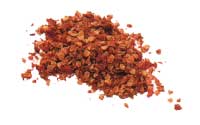 |
| Chili, fresh | Long and are most commonly used in Indonesian and Malaysian cooking. Long thin chilies are hot but not overpowering. |
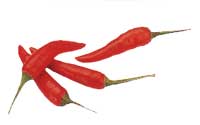 |
| Chili Padi (Bird's eye chilies) | Very small and very hot chilies. Used mainly in pickles, though in some cases added to food when a very hot flavor is required as in some Thai food. Treat with extreme caution. Available fresh, dried or pickled in brine. |
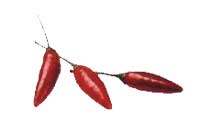 |
| Chili Powder | Made by finely grinding dried red chilies and can vary in hotness from mild to fiery. Chili flakes can be substituted but not Mexican chili powder, which is mixed with cumin. |
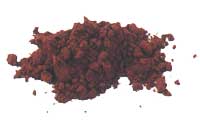 |
| Chili, dried red | Vary in size and degree of heat, depending on which type has been dried 9it is not usually specified). Soak in hot water until soft, then drain well before adding to dishes. If preferred, remove the seeds before soaking to reduce the fieriness. The tiny chilies are very hot. |
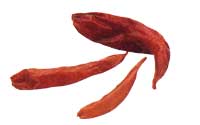 |
| Chili Sauce | There are two different types of chili sauce. The Chinese style is made from chilies, salt and vinegar and has a hot flavor. them Malaysian, Singaporean or Sri Lankan chili sauce is a mixture of hot, sweet and salty flavors generously laced with ginger and garlic and cooked with vinegar. | |
| Chinese Broccoli | See Kai Lan |
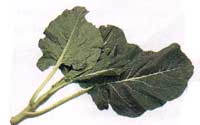 |
| Chinese Cabbage | Also known as celery cabbage and napa cabbage, has a long shape and closely packed broad, pale green leaves with wide white stems. It has a delicate mustard like flavor. This is the vegetable which is always used in cabbage rolls and Kim Chi. |
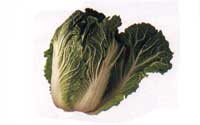 |
| Chinese Chard | See Bok Choy |
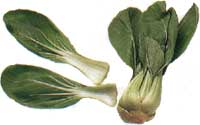 |
| Chinese Chives | See Garlic chives |
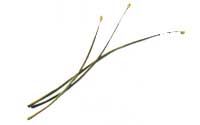 |
| Chinese Flowering Cabbage | See Choy Sum |
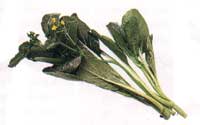 |
| Chinese Kale | See Kai Lan |
 |
| Chinese Parsley | See Coriander |
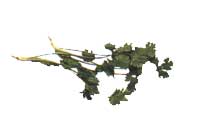 |
| Chinese White Cabbage | See Bok Choy |
 |
| Chironji nuts, Charoli | A small round shaped brownish nut with distinctive flavor. The flavor is similar to that of hazelnuts. Good substitute for sunflower seeds or pistachio nuts. | |
| Chives | Chives are the bright green, long, hollow, thin leaves of Allium schoenoprasum, an onionlike member of the lily family. | |
| Choy Sum | Also known as Chinese flowering cabbage. It is slimmer than bok choy and has a smooth green leaves and pale green stems with clusters of tiny yellow flowers on the tips of the inner s hoots. The leaves and flowers cook quickly and have a light, sweet mustard flavor. The stems are crunchy and juicy. |
 |
| Cilantro | See Coriander |
 |
| Cinnamon | One of the oldest known spices and native to Sri Lanka. It comes from the tropical evergreen laurel tree, Cinnamomum zeylanicum. The spice is the tree bark, rolled into sticks, quills or ground to powder. | |
| Cleaver | The knife used to do most of all cutting in Chinese cooking. Usually a lighter, thinner cleaver is used for slicing and chopping meats and vegetables. The heavier cleaver is used to cut through bone. | |
| Cloud ears | Brown, irregular, leafy shaped fungus or mushroom with a delicate taste. soak 15 min in warm water to soften. Rinse before using. Keeps indefinitely on shelf when dried. Also called tree ears. Also see Black Fungus |
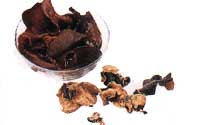 |
| Cloves | Cloves are the dried flower buds of an evergreen tropical tree native to South East Asia. They were used in China more than 2,000 years ago and were also used by the Romans. Oil of cloves contains phenol, a powerful antiseptic that discourages putrefaction and the clove is hence one of the spices that helps preserve food. | |
| Coconut Cream | Also known as thick coconut milk which is extracted from the flesh of fresh coconuts and has a thick, almost spread able consistency. It is very rich. |
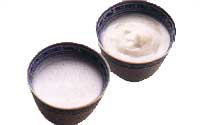 |
| Coconut Milk | Not the water inside the nut but the creamy liquid extracted from the grated flesh of fresh coconuts or from desiccated (shredded) coconut. This is the second process after the coconut cream has been pressed out and has a much thinner consistency. Once opened, the milk or cream does not keep, so freeze any leftovers. | |
| Colocasia | Another name for it is Jerusalem artichokes. It is a herbaceous plant with thick tuber containing much starch and cultivated for food for many centuries. Cooking the leaves destroys the acrid crystals of calcium oxalate found in all parts of the plant. | |
| Coriander | In United States, it is known as cilantro and Chinese parsley. All parts of this aromatic plant from the seeds, leaves, stem and root can be eaten. The leaves add an earthy, peppery flavor to curries and are used in salads and as a garnish, and the stems and roots are ground for curry pastes. Dried coriander cannot be used instead. Store a bunch of fresh coriander by standing in a glass of water, tying a plastic bag over the top of the plant and glass and refrigerating. |
 |
| Coriander Seeds | Also known as Ketumber. It is used in curries. Freshly ground coriander seeds cool the body and settle the stomach. They can be used as a substitute for pepper. | |
| Cream of Tartar | Cream of Tartar is a natural, pure ingredient left behind after grape juice has fermented to wine. | |
| Crisp fried garlic and onion | These are very thin slices of garlic cloves and onions or red Asian shallots that have been deep-fried until crisp. They are used as a garnish and can be added to peanut sauce. Available in packets or they can be prepared at home. |
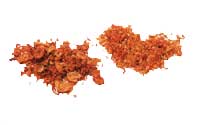 |
| Cumin | These are small, pale brown, aromatic seeds that have a warm, earthy flavor. It its ground form, cumin is an essential component of curry pastes and many other spice mixes. Black cumin is smaller and darker than common cumin and sweeter in taste. |
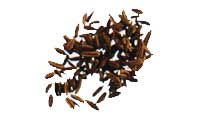 |
| Curry leaves | These small, shiny, pointed leaves from a tree native to Asia have a spicy fragrance and are used in southern India, Sri Lanka and Malaysia to impart a distinctive flavor to curries and vegetable dishes. Use as you would bay leaves and remove before serving if required. |
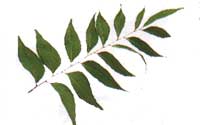 |
| Curry powder | Curry Powder is a blend of many spices and is used widely in savory dishes throughout India and Southeast Asia. |
|